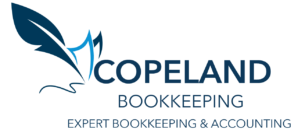
Let’s face it—there’s nothing more frustrating than winning a bid only to realize later that it’s barely covering your costs. You worked hard to land the job, but now you’re staring at razor-thin margins wondering, “Where did the money go?”
The construction industry is competitive, but landing jobs by underbidding isn’t the way to build a sustainable business. Instead, the key is to master smart estimating that protects your profits while staying competitive. Let’s dive into how you can sharpen your bidding game without slashing your margins.
Why Underbidding Is a Losing Strategy
It’s tempting to submit a low bid to secure work, especially when competition is fierce. But here’s the harsh truth: underbidding can hurt your business in ways you might not even realize.
- Thin Margins = No Room for Error: Unexpected delays, fluctuating material costs, or weather-related disruptions can quickly turn a “break-even” job into a loss.
- Hurts Your Reputation: If you cut corners to meet a low bid, you risk sacrificing quality, which can damage your brand and future opportunities.
- Traps You in a Race to the Bottom: Competing solely on price can lead to a cycle where you’re constantly forced to lower bids, putting more and more strain on your bottom line.
Bottom line: Winning the wrong bids is just as bad—if not worse—than losing them.
Secrets to Smart Estimating
So how do you strike the balance between competitive pricing and profitability? By focusing on these key strategies:
1. Know Your True Costs
Do you really know how much it costs to run your business? Beyond materials and labor, you need to factor in overhead expenses like equipment maintenance, insurance, office costs, and marketing.
👉 Pro Tip: Break your overhead into a percentage of project costs and include it in every estimate. Don’t forget to account for variables like gas prices, inflation, or changes in material costs.
2. Don’t Forget the Labor Puzzle
Labor is one of the trickiest parts of estimating because people aren’t machines (as much as some supervisors might wish!). Always consider:
- Worker productivity rates (a highly skilled worker will cost more but work faster).
- Seasonal impacts—are you paying overtime to get the job done?
- Training needs for newer workers.
👉 Pro Tip: Add a buffer to labor costs. It’s better to slightly overestimate than to underestimate and find yourself in the red.
3. Include a Contingency Fund
You can’t predict everything—unexpected issues will come up. Include a contingency (usually 5-10% of the project cost) to cover surprises. The best part? If you don’t use it, it adds to your profit.
4. Break Down Your Estimate by Phases
Estimating in chunks—site prep, foundation, framing, etc.—gives you more accuracy and transparency. It’s easier to see where costs might spiral and where you have wiggle room. Plus, clients appreciate the detail!
Level Up With Estimating Tools
Gone are the days of scribbling numbers on a notepad (please say you’ve moved past this). Modern tools can streamline the estimating process, reduce errors, and give you confidence in your bids. Here are some top picks:
1. ProEst
- Cloud-based estimating tool perfect for large or small companies.
- Includes cost databases, integration with accounting software, and detailed reporting tools.
2. Buildertrend
- Combines project management and estimating tools in one platform.
- Great for creating professional proposals that clients love.
3. STACK
- Excellent for material takeoffs and bidding.
- Includes pre-built templates and a library of construction cost data.
4. CoConstruct
- Ideal for custom builders and remodelers.
- Tracks budgets, schedules, and client communication alongside estimates.
👉 Pro Tip: Invest in training your team to use these tools efficiently. Even the best software won’t help if nobody knows how to use it!
The Smart Bidder’s Mindset
Smart bidding isn’t just about crunching numbers; it’s a mindset shift. Instead of thinking, “How low can I go?” ask yourself, “How can I add value?”
- Highlight your expertise and reliability in your proposals. Clients are often willing to pay more for peace of mind.
- Focus on building relationships, not just winning jobs. A satisfied client will come back to you for future projects—and even refer you to others.
Final Thoughts
Bidding smart means being intentional, strategic, and confident in your numbers. Don’t be afraid to say “no” to jobs that don’t make financial sense. When you know your worth and estimate accurately, you can land profitable jobs and sleep soundly at night knowing you’re running a sustainable business.
So the next time you’re putting together a bid, ask yourself: “Am I protecting my margins?” Because in this industry, profitability isn’t just a goal—it’s the foundation for long-term success.
Now get out there and start winning bids like the pro you are! 🎉
At Copeland Bookkeeping, we’ve drawn from years of experience, research, and our work with countless construction companies to identify the top six factors that determine how successfully your construction business can scale and grow. In fact, most businesses in this industry are getting at least four of these factors wrong. Take a look and see how you measure up.
